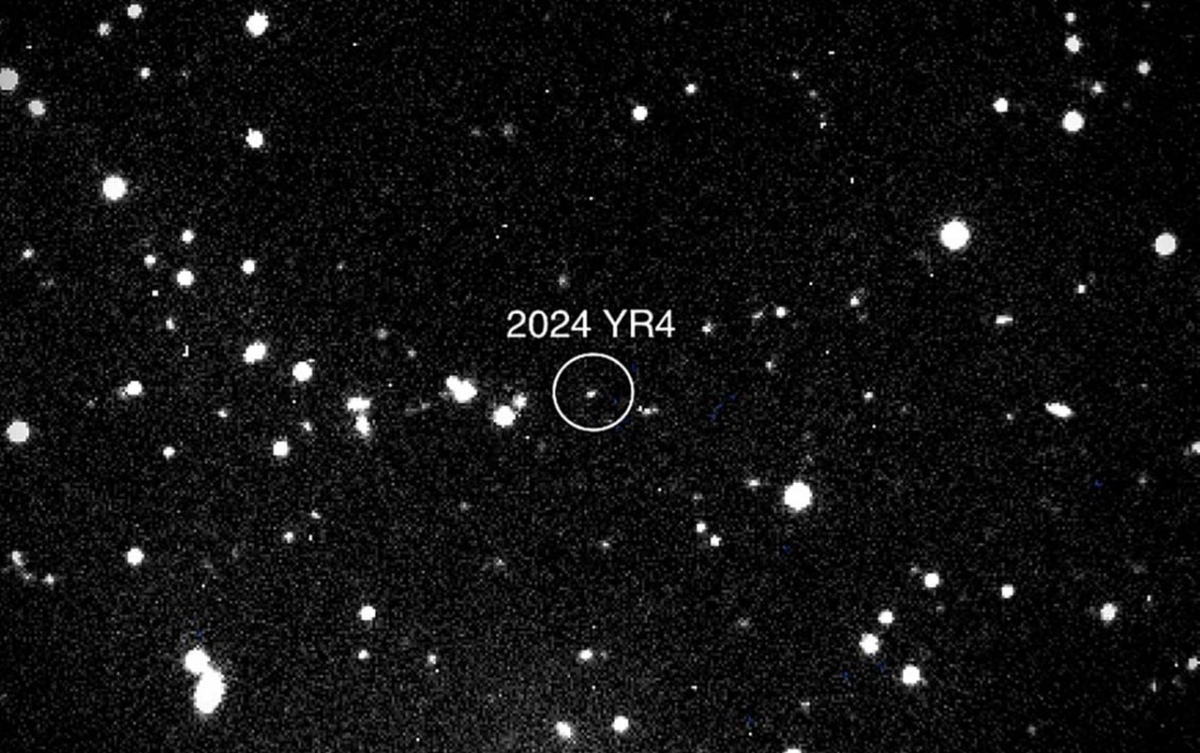Nasa: Asteroid 2024 YR4 no longer a significant threat to Earth

This handout picture provided by NASA on January 31, 2025 shows asteroid 2024 YR4 as observed by the Magdalena Ridge 2.4m telescope at the New Mexico Institute of Technology on January 27, 2025. A colossal explosion in the sky, unleashing energy thousands of times greater than the Hiroshima bomb. A blinding flash that momentarily outshines the Sun. A shockwave powerful enough to flatten everything for miles. There’s a small but real chance this apocalyptic scenario could unfold in eight years — if a newly detected asteroid, nearly the size of a football field, collides with Earth. While there’s no immediate cause for alarm, scientists are watching closely. (Photo by Handout / NASA/Magdalena Ridge 2.4m telescope/New Mexico Institute of Technology/Ryan / AFP)
MANILA, Philippines — An asteroid, whichemerged the most threatening celestial body in forecasting history, no longer poses a significant threat to Earth, according to the American agency National Aeronautics and Space Administration (Nasa).
In its Monday report, Nasa said its Jet Propulsion Laboratory’s Center for Near-Earth Object Studies’ experts said it has significantly lowered the risk of the near-Earth asteroid 2024 YR4.
The latest forecast from Nasa’s experts found that “there is no significant potential for this asteroid to impact our planet for the next century.”
Previously, Nasa said 2024 YR4, estimated to be about 40-90 meters across, had a minimal chance of impacting on Dec. 22, 2032.
At one point, the impact probability of the asteroid rose to 3.1 percent on Feb. 18, which is “the highest impact probability Nasa has ever recorded for an object of this size or larger.”
But on Feb. 19, Nasa reduced the impact probability to 1.5 percent before further pegging it to 0.28 percent.
Nasa said this asteroid was large enough to cause localized damage.
The asteroid’s airburst of an object on the smaller side of the size, ranging from 40-to 60 meters, would have shattered windows or caused minor structural damage across a city.
But if this asteroid’s size reached 90 meters, it would have caused the potential collapse of residential structures across a city while shattering windows across larger regions.
It was first discovered last Jan. 27 by Nasa-funded Asteroid Terrestrial-impact Last Alert System in Chile.
Last year, a “very small”, one-meter asteroid burned over Luzon, according to the European Space Agency (ESA).
Small asteroids, or around one meter in diameter, hit the earth every two weeks, but the ESA said that this asteroid is only the ninth time that humankind has discovered an asteroid before it impacts the planet.
The last catastrophic asteroid hit the earth about 65 million years ago, the impact of which killed 70 percent of all species on earth. (with reports from Sheba Barr, INQUIRER.net trainee)